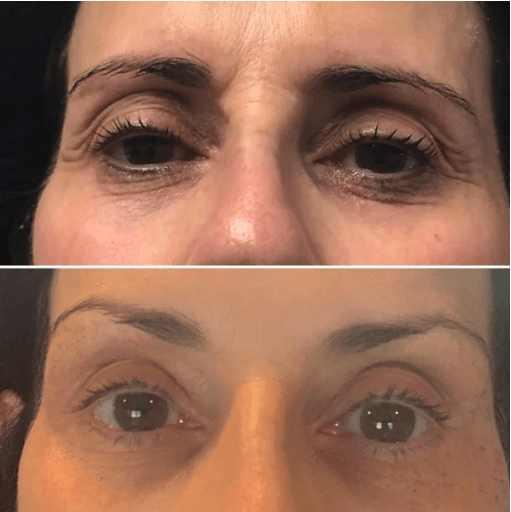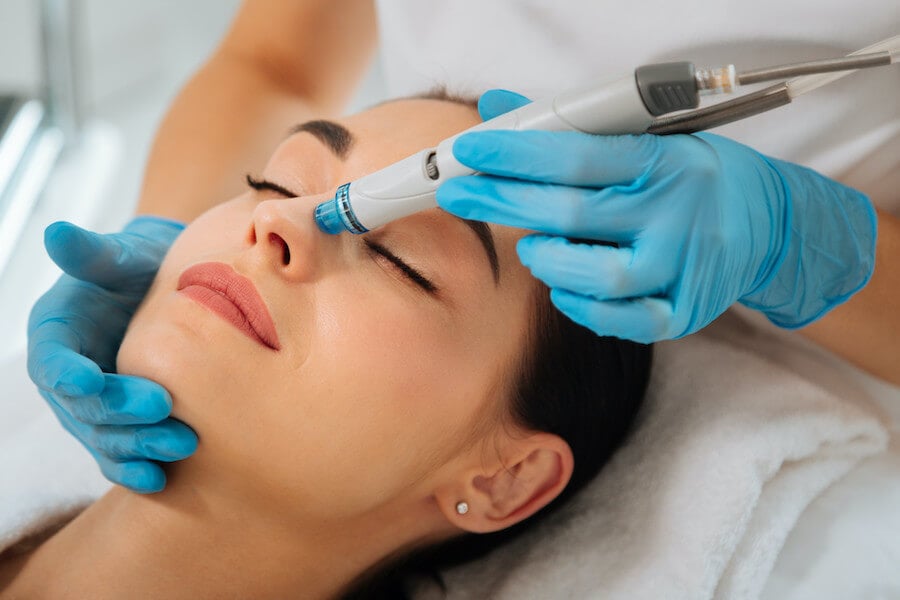Introduction to Chemical Peels
Chemical peels are a transformative skin treatment widely used in our Scottsdale med spa. These procedures involve the application of a chemical solution to the skin, designed to remove dead and damaged skin cells. This treatment reveals a fresher, more vibrant layer of skin, reducing the appearance of wrinkles, scars, and uneven pigmentation.
What is a Chemical Peel?
A chemical peel is a dermatological procedure aimed at improving the skin’s appearance. It involves the application of a chemical solution, such as glycolic acid, salicylic acid, or trichloroacetic acid, to the skin. This solution works by exfoliating the top layers of skin, which eventually peels off, hence the name. The new skin underneath is typically smoother and less wrinkled compared to the old skin.
Types of Chemical Peels: Superficial, Medium, and Deep
Chemical peels come in various intensities, each tailored to address different skin concerns. Understanding these types will help you choose the right one for your skin.
Superficial Peels
Superficial peels, often containing mild acids like alpha-hydroxy acid, gently exfoliate only the outer layer of skin. They are effective for mild skin issues like fine lines, acne, uneven skin tone, and dryness. They have the least downtime and are ideal for those looking for subtle improvements and maintenance.
Medium-Depth Peels
Medium-depth peels penetrate the outer and middle layers of skin. They are more effective for treating moderate skin damage, including deeper wrinkles, acne scars, and uneven skin tone. Glycolic or trichloroacetic acid is commonly used in these peels. The recovery period is longer compared to superficial peels.
Deep Peels
Deep chemical peels provide the most intensive skin resurfacing. They target the deeper layers of the skin and are effective against severe wrinkles, scars, and precancerous skin patches. Phenol is often the active ingredient in deep peels. Due to their intensity, they require significant downtime and have a longer healing process.
How Do Chemical Peels Work?
Chemical peels improve the skin’s appearance by removing the damaged outer layers. The acids in the peel solution create a controlled wound, allowing the skin to regenerate and resurface. This process reduces imperfections like scars, wrinkles, and uneven texture, enhancing the overall skin tone and appearance.
The Chemical Peel Process: What to Expect
During a chemical peel, your skin will be cleansed thoroughly before applying the peel solution. Once applied, the solution works on the skin for a specific period, during which you might feel tingling or a mild burning sensation. After the set time, the solution is neutralized and washed off. Depending on the type of peel, the skin may start to peel over the next few days, revealing new, rejuvenated skin underneath.
Chemical Peel Treatment: Tailored to Your Skin Type and Condition
The effectiveness of a chemical peel depends on tailoring it to your specific skin type and condition. A detailed skin assessment by a professional is vital to select the right type and depth of peel, ensuring optimal results with minimal risks.
Can You Do a Chemical Peel at Home?
While at-home chemical peel kits are available, they are generally less potent than professional treatments. Professional peels performed at a med spa offer a higher concentration of active ingredients, providing more significant results for issues like deep wrinkles, scars, or severe hyperpigmentation. At-home kits may be suitable for mild exfoliation, but for safety and effectiveness, professional supervision is recommended, especially for medium to deep peels.
Chemical Peels for Acne and Acne Scars
Chemical peels can be highly effective in treating both active acne and residual acne scars. Salicylic acid peels are particularly beneficial for acne-prone skin due to their ability to penetrate and unclog pores. They also have anti-inflammatory properties, which help reduce the redness and swelling associated with acne. For acne scars, a medium or deep peel can promote significant skin turnover, diminishing the appearance of scars over time.
Chemical Peels for Hyperpigmentation and Uneven Skin Tone
Chemical peels are also a popular choice for treating hyperpigmentation and uneven skin tone, including conditions like melasma and sun spots. By removing the outer layer of skin, peels can reduce the appearance of dark spots and contribute to a more even skin tone. Peels with glycolic acid are particularly effective for hyperpigmentation due to their ability to penetrate deeply into the skin.
Post-Peel Care: Maximizing Your Results
Proper post-peel care is essential for healing and maximizing the benefits of your chemical peel. This includes avoiding direct sunlight and using a broad-spectrum sunscreen, as the new skin is particularly sensitive to the sun. Additionally, using gentle, non-irritating skincare products and keeping the skin hydrated will support the healing process and enhance results.
Are Chemical Peels Right for You?
Chemical peels are versatile treatments suitable for various skin types and conditions. However, they may not be appropriate for everyone, particularly those with sensitive skin or certain skin disorders. Consulting with a skincare professional is crucial to assess your skin’s suitability for a peel and to choose the most appropriate type of peel for your specific needs.
Summary: Key Points to Remember
- Chemical peels can effectively treat wrinkles, scars, acne, and uneven skin tone.
- They are categorized into superficial, medium, and deep peels, each targeting different skin issues.
- The choice of peel depends on your specific skin type and condition.
- Post-peel care is crucial for optimal results and minimizing side effects.
- Professional consultation is essential to determine if a chemical peel is suitable for you.
Transform your skin with a chemical peel tailored just for you. Contact our Scottsdale med spa today to schedule a consultation and take the first step towards radiant, rejuvenated skin!






